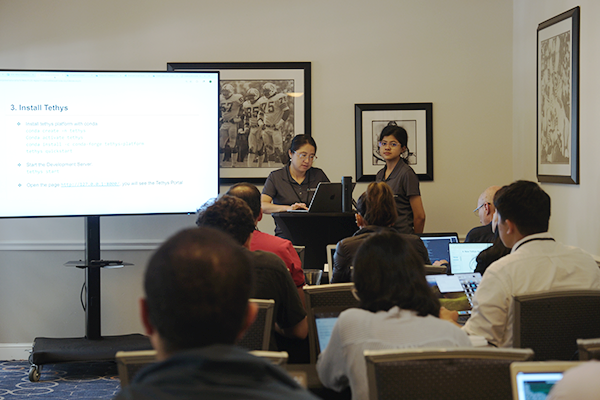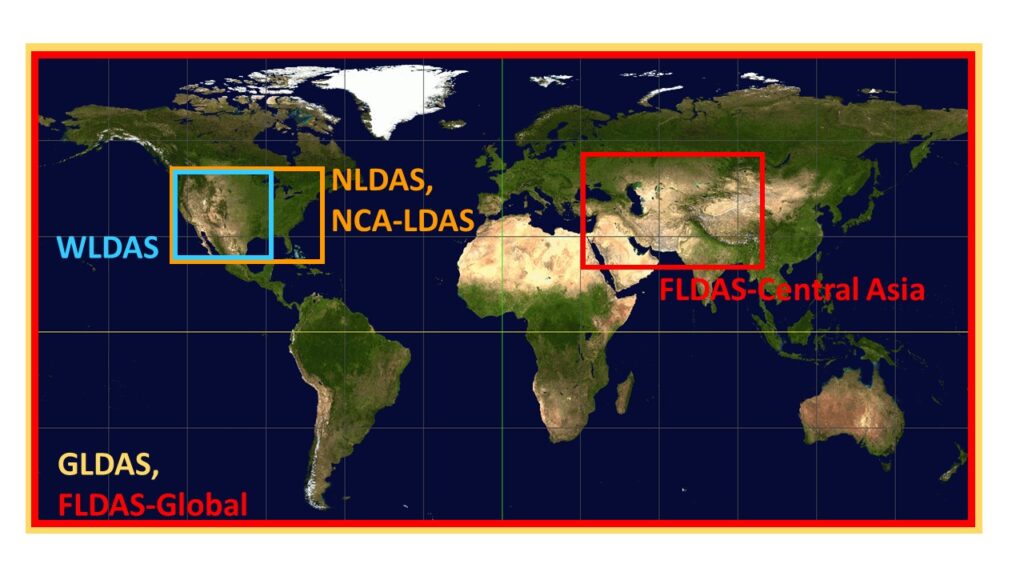Your cart is currently empty!

Interactive Applications for Education
—
Earth science offers countless examples of dynamic systems that shape the world around us; rivers carving valleys, aquifers storing and releasing water, weather patterns shifting across regions. These processes are fascinating but also complex. Students might learn the water cycle but fail to grasp how precipitation patterns affect regional agriculture, or learn about groundwater without understanding how pumping in one location affects aquifers hundreds of miles away.
Today’s digital tools are transforming Earth science education by making these complex relationships visible and interactive, allowing students to explore environmental processes rather than simply reading about them. Tethys Geoscience Foundation seeks to enable educators to have the tools they need to bring Earth science alive for their students.
Connecting Local and Global Perspectives
One of Earth science education’s greatest challenges lies in helping students understand connections between local phenomena they can observe and global processes they can’t directly experience. Students might notice local weather patterns but struggle to connect them to global climate systems, or observe local water issues without understanding their relationship to regional hydrology.
Interactive applications provide pathways for exploring these scale relationships. Students can examine local environmental conditions using the same tools and data sources that scientists use for regional or global analysis. This connection helps students understand how their local environment fits into larger Earth systems while developing appreciation for the scientific methods used to study these systems.
The Climate Trends application exemplifies this scale-bridging capability by allowing students to explore GLDAS satellite information from the past 30 years. Students can compare local conditions to regional patterns, examining how variables like air temperature, humidity, precipitation, and evapotranspiration vary across different geographic scales and temporal periods.
Developing Scientific Thinking
Interactive Earth science applications don’t just convey information, they help students develop scientific thinking skills by providing environments for hypothesis testing and data analysis. Students can formulate questions about environmental processes, design investigations using available tools, and interpret results to draw conclusions.
This investigative approach mirrors authentic scientific practice while remaining accessible to students at different levels of technical sophistication. Beginning students might explore basic relationships between variables, while advanced students can conduct more sophisticated analyses using the same underlying tools and datasets.
The Hydrostats App demonstrates this educational potential by providing tools for validating hydrological time series data and ensemble forecasts. Students can learn about model evaluation, uncertainty analysis, and statistical methods while working with real environmental data and professional-grade analytical tools.

Preparing Future Scientists
For students who pursue careers in Earth science, early exposure to professional-grade tools and methods provides significant advantages. Students can develop familiarity with current tools and best practices from the beginning of their education.
The open-source nature of Tethys applications particularly supports this preparation by ensuring that students have continued access to the tools they learn. Unlike proprietary software that might become unavailable after graduation, open-source tools remain accessible for ongoing learning and professional development.
Students who contribute to open-source projects during their education also develop valuable experience with collaborative development practices that serve them well in professional settings. They learn to document their work, manage version control, and collaborate with remote team members. These are skills that prove increasingly important in modern Earth science careers.
Implementation Challenges and Opportunities
Successfully integrating interactive applications into Earth science education requires thoughtful consideration of technical infrastructure, educator training, and curriculum design. Schools need reliable internet connectivity and appropriate hardware to support interactive applications, while educators need professional development opportunities to learn how to use these tools effectively.
However, the benefits often justify these investments. Interactive applications can enhance learning outcomes while reducing long-term costs compared to traditional laboratory equipment and field trip expenses. They also provide opportunities for authentic assessment that goes beyond traditional testing approaches.
Building Scientific Literacy
Beyond preparing future Earth scientists, interactive applications contribute to broader scientific literacy by helping all students develop understanding of how science works and why it matters. Students who engage with real environmental data and professional analytical tools develop a more sophisticated understanding of scientific methods and their applications.
Interactive Earth science education represents a powerful approach to preparing students for a world where environmental challenges require both scientific understanding and technological literacy. By making Earth systems visible, interactive, and relevant, these tools help students develop the knowledge and skills they need to understand and protect our planet.
To learn more about educational applications of Tethys Platform and resources for Earth science educators, follow us on LinkedIn for updates on innovative teaching tools and educational initiatives that are transforming how students learn about our planet.

Leave a Reply